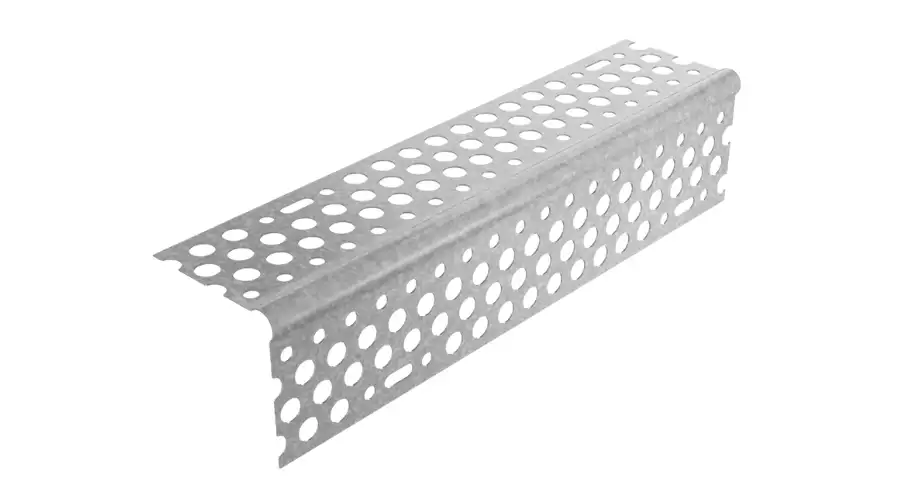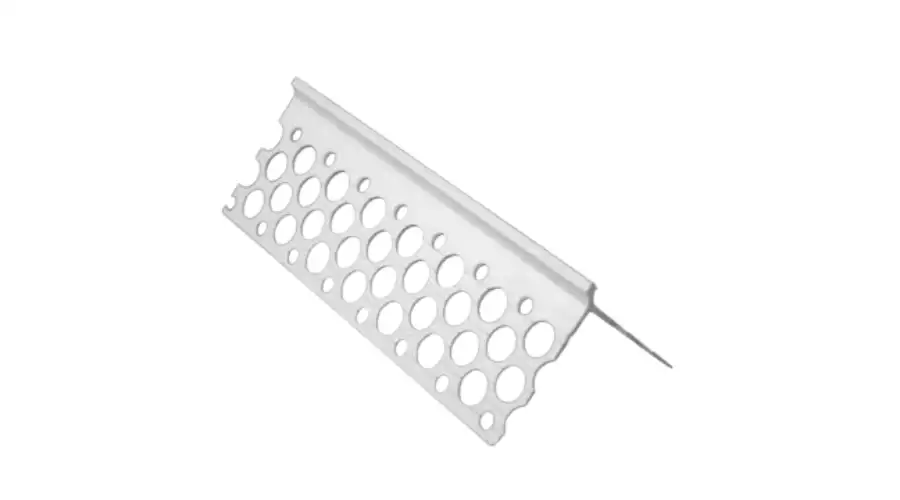Every small work needs extra care and attention in any construction project. From the foundation to the final touches, each element contributes to achieving the desired strength and beauty. One such significant element is angle beads. It is a precise way to design a clean, neat corner when skimming a wall.
Let’s have a read of the following article, which gives you a detailed view of angle beads, their types, and their importance.
What are Angle Beads
Angle beads, also known as plaster beads, are a tool used to create smooth and crisp edges and corners. When it comes to the decoration of walls, arches, and other surfaces, angle beads offer a professional result. They are thin, L-shaped strips, leaving a perfect corner at the joint, and can be used only on an external corner.
These beads ensure that walls and ceilings are of uniform thickness and can last for many years. With a variety of options available, you can choose the type of beads that align with your project needs.
They are made up of several metals, from galvanized steel to plastic; you can understand the differences between each type and choose the appropriate one based on your needs.
Application of Angle Beads
Angle beads are often called corner beads, creating straight and smooth corners on the walls and arches. When it is a primary tool to achieve the perfect finishing, it is used in several applications. Some of them include:
Reinforcement: Angle beads act as a shield to thin materials like plaster or drywall. They provide sufficient structural support to the construction and prevent sagging or cracking.
Corner Protection: Beads help create precise corners and edges in the walls. They prevent vulnerable corners from causing damage, such as scrapes, bumps, or general wear and tear. Ensuring the longevity of your walls and ceilings by restricting the appearance of cracks and blemishes.
Uniformity: Finishing the edges and corners with a consistent thickness provides a unique and ideal appearance to the walls and ceilings. As is widely known, angle beads are primarily valued for their professional and polished look that elevates the overall beauty of your space.
Types of Angle Beads
Angle beads are classified into various types. Each has its own characteristics and is suitable for specific applications. Here are the types:
Metal Angle Beads

Galvanized Steel: This is the most common type of material used in the majority of construction projects. They offer exceptional durability and resistance to rust. It is well-suited for internal corners where moisture is a primary concern.
Stainless Steel: Stainless steel is ideal for external corners to withstand harsh weather conditions. It creates a neat, crisp finish and provides superior resistance against corrosion.
Plastic Angle Beads

PVC (Polyvinyl Chloride): PVC angle beads are mostly seen in interior applications where aesthetics are valued. It is weightless and easy to install according to the desired interior design styles. They are available in several colours, offering perfect finishes in your interior space.
How to Install Angle Beads
The installation of angle beads is a daunting task, but with the assistance of the right tools and techniques, it can be a manageable task. Here is the step-by-step guide:
Measure and Cut: Initially, take measurements of the corners or walls where you need to install the angle beads. Cut them to the desired length using tin snips. However, ensure you have made a clean, straight cut for proper finishing.
Prepare the Corner: Prepare a corner that is free from dust and debris. For better adhesion, you can slightly sand the edges of the drywall, providing you with a smooth and neat surface.
Keep in the Right Position: Place the angle beads in the right position, ensuring they are perfectly vertical and straight. The edges of the corners should be accurately situated to ensure aesthetics.
Secure the Angle Beads: The backside of the angle beads should be screwed into the drywall. The drill shouldn’t penetrate too deep to avoid causing any damage to the front edge of the bead.
Corner Finishing: Once the plaster dries well, you can coat the corners to fill any gaps. When the imperfections are eliminated, a smooth and seamless finish can be achieved.
Benefits of Angle Beads
Angle beads offer several advantages in construction, including:
Corner Protection:
Angle beads protect the vulnerable corners from damages such as scrapes, bumps, and general wear and tear. Beyond acting as a shield, it also extends the lifespan of your walls and ceilings.
Structural Support: Angle beads offer excellent structural support to the thin materials to prevent them from sagging and cracking. The materials, like drywall or plaster, need additional attention to ensure a smooth and neat finish.
Neat and Sharp Corners: Angle beads are an efficient way to create clean, sharp corners on your walls and ceilings. It is ideal for improving the aesthetics and acquiring a professional look.
Simple to Install: They are lightweight, and the installation is relatively simple and effortless. The protection can be improved using nails, screws, or plaster based on the specific construction needs.
Cost-Effective: The initial investment associated with purchasing angle beads is typically low. It saves you money in the long run by preventing the corners from any damage or cracks. You don’t need to spend often on repairs or maintenance.
Closing Thoughts
Angle beads may not be a suitable choice for all types of construction. However, you can consult your builder and learn about the installation possibilities. Choosing the right type of beads elevates the beauty and functionality of your project. By understanding the specific needs of each type, you can choose appropriate beads to improve strength and sense of touch. Hopefully, you have understood the types, installation process, and significance associated with the angle beads, which help you make an informed decision.

